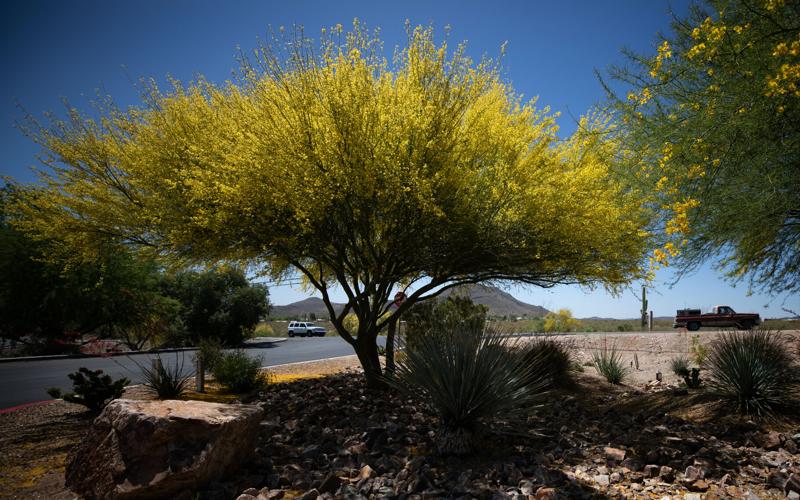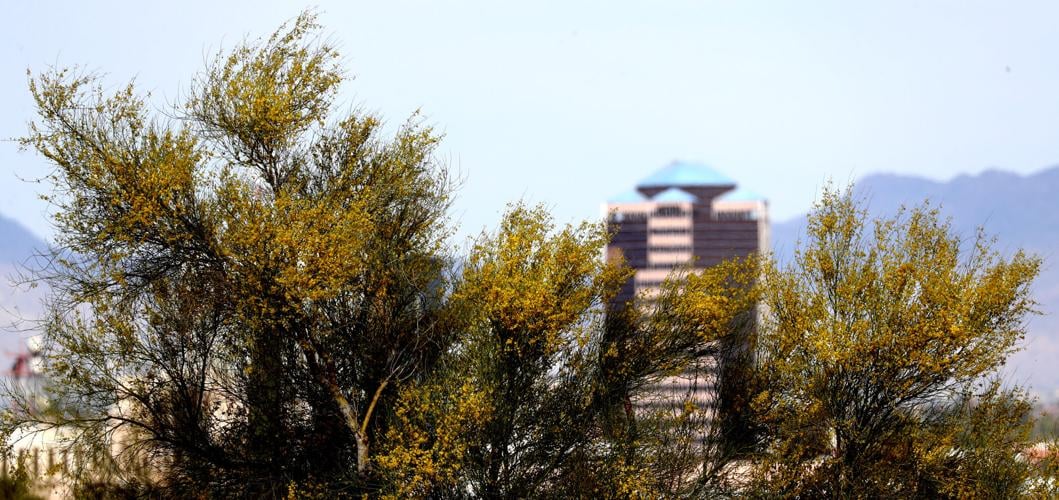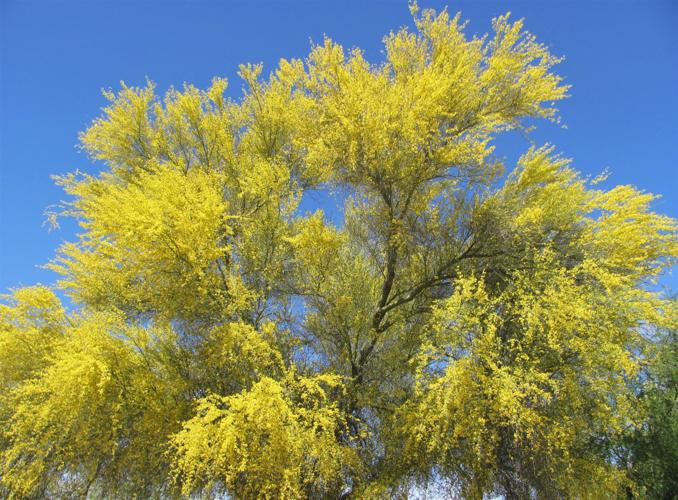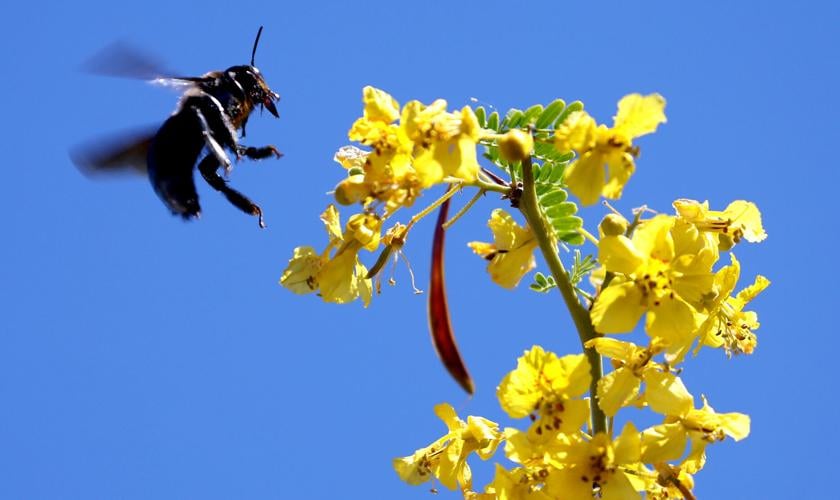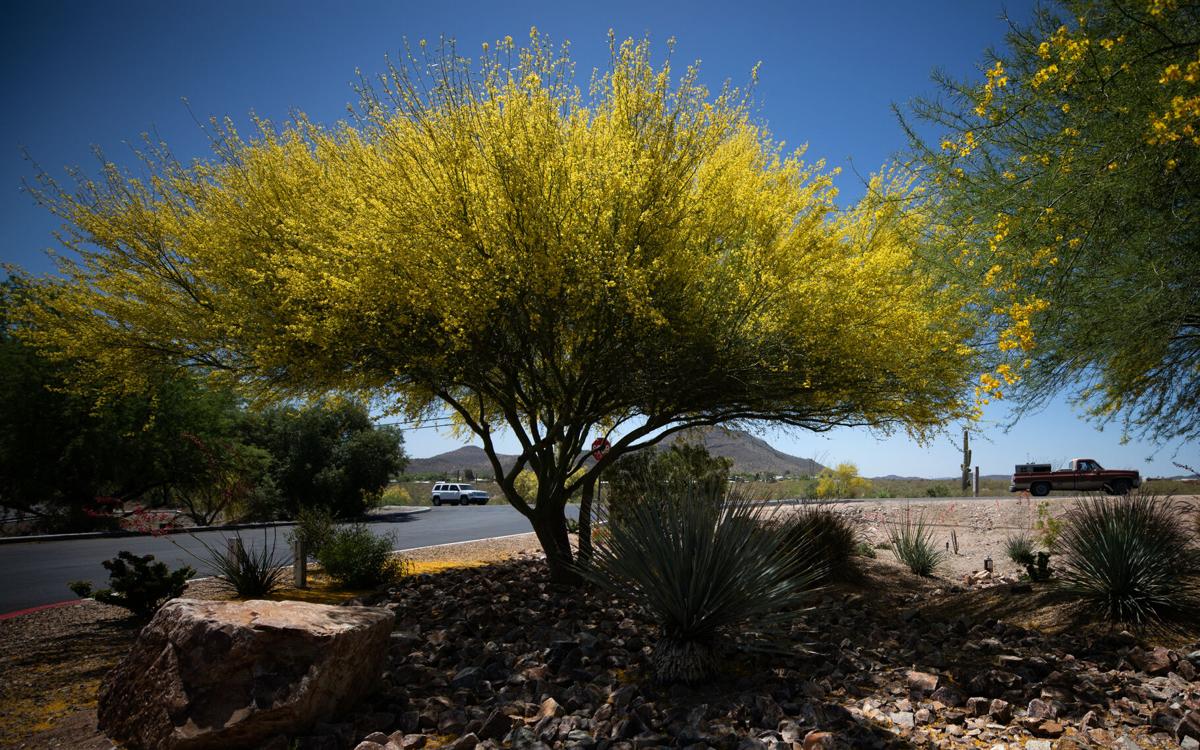It's not spring in Tucson without carpets of yellow palo verde flowers. 🌼 Here's what to know about palo verde trees!

Palo verde trees are easy to identify by their green trunks and branches, and their lush canopies of yellow flowers in the spring.
1. The name is Spanish and means "green stick"
The bark of a palo verde tree is green because it's filled with chlorophyll. Unlike most trees, this plant gets a lot of photosynthesizing done through its bark. According to The Arizona Native Plant Society, only about a quarter of the palo verde's food is produced by the leaves.
2. It's the Arizona State Tree!
Designated as Arizona's state tree in 1954, the palo verde joined the ranks of the cactus wren, bola tie and saguaro cactus blossom as a state symbol.
3. There are different types of palo verde
Arizona hosts two native species, the Foothill Palo Verde and the Blue Palo Verde.
The Foothill Palo Verde (Cercidium microphyllum) can be found mostly on rocky slopes. They have a yellow-green trunk, tiny leaves and pods that constrict around the seeds.
The Blue Palo Verde (Cercidium floridum) can be spotted next to water sources, like washes, and have a blue-green trunk. They grow faster than the Foothill Palo Verde but have a shorter life span.
The Blue Palo Verde typically blooms first, in March and April. The Foothill Palo Verde blooms later, in April and May. The flowers also look a bit different!
According to The Arizona Native Plant Society, when the palo verde became Arizona's state tree, the legislature didn't specify which of the two species made the cut — so both types share the designation!
Read more about the differences here.

One of the trams drives down the road to Bear Canyon Trail through blooming palo verde trees and saguaros in the Sabino Canyon Recreation Area.
4. There's also a species called "Desert Museum"
Yep, it's named after the Arizona-Sonora Desert Museum. According to a Los Angeles Times article, the name was created about 30 years ago when staff members at the museum began to notice thornless palo verde trees that bloomed throughout the summer.
5. They can easily live a century
The Foothill Palo Verde can live to be about 100 years old. Some can even age up to 400 years.
6. Blue Palo Verde can grow up to 40 feet
The Foothill Palo Verde usually matures at less than 30 feet.

7. You can eat the seeds
Palo verde seeds have been used and eaten for hundreds of years, the Desert Museum says, with the Seri eating them fresh, toasted or ground as flour and the Tohono O'odham eating them fresh from the pods.
The Arizona Native Plant Society compares Foothill Palo Verde seeds to snow peas. They've been known to be a little sweet, while Blue Palo Verde seeds are a bit more bitter.
You can also wait to harvest them until the seed is fully developed and the pod is dry, usually in summer. At this stage, they're best eaten sprouted. Learn more about the harvesting process here.
8. You can also eat the flowers
You can eat these yellow bursts of spring raw. Sprinkle some in your next salad.

A carpenter bee hovers over one of the blooming palo verde trees in the parking lot at Hi Corbett Field.
9. They may not contribute as much as you think to your seasonal allergies
According to this TikTok from Phoenix's Desert Botanical Garden, palo verdes rely on animals like beetles and bees to pollinate them, unlike other plants that rely more on wind. "The main culprits are wind-pollinated plants," they say.
The pollen produced by palo verdes is said to be sticky, making it more difficult (though not impossible) to travel far in the wind. However, the large quantities of dried fallen yellow flowers are known to do some damage when carried through the wind.
This 2017 story from the Arizona Daily Star says other plants, including ragweed, rabbitbush, ash, mulberry and olive trees, are often considered greater problems for allergy sufferers.
10. The cactus is their best friend
According to a Desert Museum fact sheet, the palo verde is the primary nurse plant for baby saguaros.


